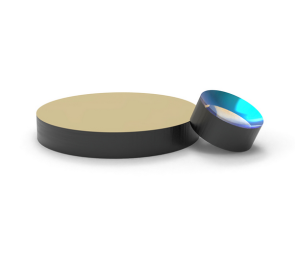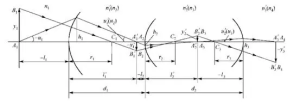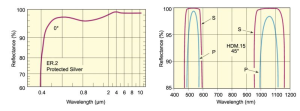There are many kinds of optical glass, which can generally be divided into two types according to the refractive index of colorless optical glass or the number of Abbe.
The production process of quartz glass is as follows:
1、 Manufacturing melting furnace: there are two kinds of melting furnace: clay furnace and platinum furnace. In recent years, small platinum furnaces have been used for optical glass infiltrated with rare elements to maintain quality stability.
2、 Put optical glass raw materials into the melting furnace (especially clay furnace) after a long time of drying, put them into the melting furnace according to the special formula and selected raw materials, and prepare for melting.
3、 Heating, melting and stirring: heating conditions depend on the material. However, all materials must be mixed evenly to achieve uniformity.
4、 Cooling: “cooling slowly” for a long time. However, the length of time also varies with the material, which is the most important process to ensure good quality.
5、 Splitting furnace and sorting: split the clay furnace, take out the massive rough embryo and sort it.
6、 Inspection, test and shaping: check or test the properties one by one to ensure the excellent quality of quartz glass.
7、 Cutting and chamfering (trimming): cut the block rough embryo into small pieces and chamfer it according to the purpose and specification.
8、 Embryo molding: after heating and softening the coarse embryo, the embryo is molded according to the specifications of the engineering drawing. However, various molds, tools and auxiliary materials shall be manufactured or prepared in advance.
9、 Burn off: anneal and passivate to eliminate internal stress.
10、 Test and inspection: test the optical performance and appearance of the embryo. The finished optical quartz glass will become the rough embryo of the downstream industry (optical component manufacturing and processing plant), and will become optical components after continuous processing and grinding.
The gas (gas) generated from raw materials during melting will remain in the glass, just like foam, which is bubble. The traces of stirring will also remain in layers inside the glass, like stripes, which are called veins.
In addition to the optical quartz glass, the main composition of the ordinary white sheet of Yiwei Te Glass Factory is the sodium calcium silicate system, with the refractive index of 1.51, the transmittance of visible light of more than 89%, and can absorb ultraviolet rays below 280nm.
The main composition of optical white film is sodium calcium silicate system, with refractive index of 1.531, Abbe number of 60.5, transmittance of more than 91%, and the worst anti-ultraviolet performance. UV optical white film is made by adding a small amount of titanium oxide and cerium oxide to the optical white film composition to make it have the ability to absorb ultraviolet rays. The refractive index is 1.523, the Abbe number is 58.7, the transmittance is more than 91%, and it can absorb ultraviolet rays below 330nm. With good mechanical properties and chemical stability, it is a white high-quality lens widely used at home and abroad to absorb ultraviolet rays.



